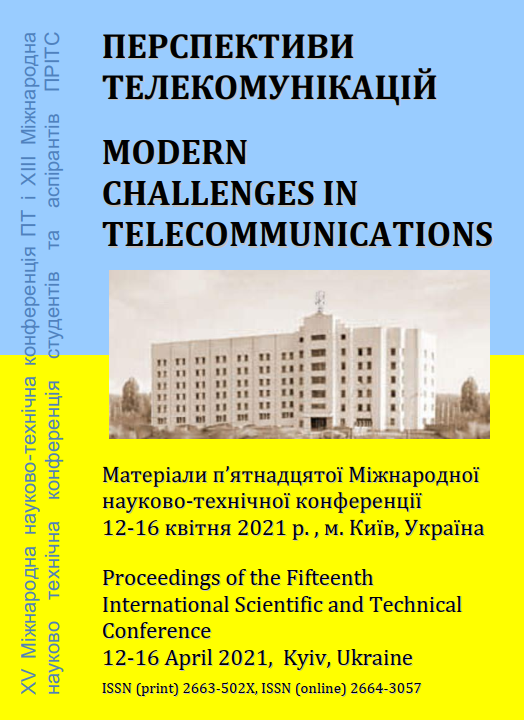МЕТОД ВИЯВЛЕННЯ ВТОРГНЕНЬ В МЕРЕЖІ IOT
Ключові слова:
IOT, БЕЗПЕКА, ВРАЗЛИВОСТІ МЕРЕЖІ, НЕЙРОМЕРЕЖААнотація
Проаналізовано сучасні методи виявлення вторгнень у мережу. Розглянуто переваги та недоліки використання нейромережевого методу виявлення вторгнень. Розглянуто перспективи використання нейромережевих методів. Запропоновано метод виявлення вторгнень на основі нейронної мережі.Посилання
SECURELIST [Електронний ресурс] / Ден Деметр, Марко Пройсс, Ярослав Шмелев. Отчёт безопасности устройств за 2019 год — Режим доступа: https://securelist.ru/iot-a-malware-story/94900/ (дата публикации: 19.12.2019).
Posetive Technologes [Електронний ресурс] / Актуальные киберугрозы. II квартал 2018 года — Режим доступа: https://www.ptsecurity.com/ru-ru/research/analytics/cybersecurity-threatscape-2018-q2/ (дата публикации: 13.09.2018).
Шелухин О.И. Обнаружение вторжений в компьютерные сети (сетевые аномалии): учебное пособие для вузов / О.И. Шелухин, Д.Ж. Сакалема, А.С. Филинова. – М.: Горячая линия-Телеком, 2013. – 220 с.
M. Roopak, G. Yun Tian and J. Chambers, "Deep learning models for cyber security in IoT networks", pp. 0452-0457, 01 2019.
##submission.downloads##
Опубліковано
Як цитувати
Номер
Розділ
Ліцензія

Ця робота ліцензується відповідно до Creative Commons Attribution 4.0 International License.
Authors who submit to this conference agree to the following terms:a) Authors retain copyright over their work, while allowing the conference to place this unpublished work under a Creative Commons Attribution License, which allows others to freely access, use, and share the work, with an acknowledgement of the work's authorship and its initial presentation at this conference.
b) Authors are able to waive the terms of the CC license and enter into separate, additional contractual arrangements for the non-exclusive distribution and subsequent publication of this work (e.g., publish a revised version in a journal, post it to an institutional repository or publish it in a book), with an acknowledgement of its initial presentation at this conference.
c) In addition, authors are encouraged to post and share their work online (e.g., in institutional repositories or on their website) at any point before and after the conference.

